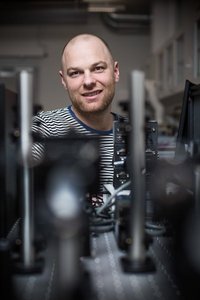Group Leader Magnus Kjaergaard submitted an article to Videnskab.dk via ForskerZonen

What happens when we create memories?
Magnus Kjærgaard describes in an article from 09/03/18 in layman terms how PROMEMO studies the formation and storage of memories.
Our memory can store information for centuries, but most of the information is not actually stored. Experiences are stored if they are unusual or evoke strong emotion. We know that memory is in the brain but how is the brain capable of storing this information?
The brain exists of the same types of molecules as the rest of the body. However, it is the plasticity of the brain that makes it capable of storing information: the structure of the brain is shaped by input from the environment and our thoughts.
The plasticity happens in the way the brain cells communicate:
Synaptic communication is the result of a synapse sending out a chemical signal, which is picked up by the other cell.
PROMEMO strives to answer the question of which new proteins are formed when a memory is created. In order to study this, techniques such as optogentics and electron microscopes are applied in order to look out for changes in the brain’s proteins following the creation of a new memory.
Ultimately, by studying the fundamental mechanisms of memory it may for instance lead to reduce the symptoms of dementia or to understand better the occurrence of mental disorders due to changes in proteins.
Read the full text here (in Danish): videnskab.dk/naturvidenskab/det-sker-i-hjernen-naar-vi-skaber-minder